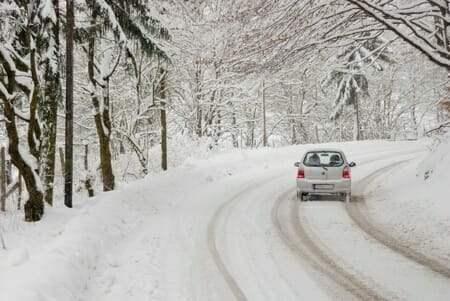Winter storms can wreak havoc on roadways, making driving hazardous and sometimes leading to significant vehicle damage. Whether it’s from icy roads, falling branches, or a snowstorm that causes an accident, knowing how to respond when your car is damaged can help you navigate the insurance claims process smoothly. Here’s a step-by-step guide on what to do if your car is damaged during a winter storm and how to file an auto insurance claim.
1. Ensure Safety First
Before worrying about the damage to your vehicle, your safety should always be the first priority. If you’re in an accident or stranded in a winter storm, move to a safe location if possible. If your car is still in a dangerous spot, try to get out of traffic or away from hazards like falling debris. Turn on your hazard lights to alert other drivers, and if you’re able to, call emergency services to report the situation. Make sure you and any passengers are unharmed before moving on to the next steps.
2. Assess and Document the Damage
Once you’re in a safe place, carefully assess the damage to your car. Look for visible signs such as broken windows, dents from falling ice or branches, or scratches from snowdrifts. If your vehicle has been involved in an accident, take note of any collision damage.
Documentation is critical for filing an insurance claim, so take detailed photos of the damage from multiple angles. Be sure to capture wide shots and close-ups to show both the overall condition of the car and specific damage areas. Don’t forget to photograph any environmental conditions that might have contributed to the damage, such as ice on the road, snow accumulation on your vehicle, or a fallen tree nearby. If there were any other vehicles involved in the incident, take photos of their damage as well, if possible.
3. Report the Incident to Your Insurance Company
After documenting the damage, the next step is to report the incident to your auto insurance company as soon as possible. Most insurance companies have a 24/7 claims hotline or an online claims portal. Provide them with all the necessary details about the incident, including when and where it occurred, the severity of the damage, and any other relevant information. Share the photos you took to help support your claim.
If the damage is due to an accident involving another driver, provide your insurance company with their contact information and details of the incident, including whether the police were involved. This information will help the insurance adjuster determine liability and the scope of the claim.
4. Review Your Insurance Coverage
Not all types of damage may be covered by your policy, so it’s important to understand your coverage. If you have comprehensive coverage, it may cover damage caused by non-collision events such as winter storms, falling trees, or hail. On the other hand, if you only have liability insurance, your insurance may not cover the damage to your car.
If you’re unsure about your coverage, reach out to your insurance agent to clarify what’s included in your policy. Knowing your coverage will help you understand what costs you’ll be responsible for, such as your deductible, and what the insurance company will cover.
5. File Your Claim
Once you’ve provided all the necessary information, it’s time to file your claim. The insurance company will typically assign an adjuster to assess the damage to your car. Depending on the severity of the damage, this could involve a physical inspection of the vehicle or the use of photos you submitted.
After the claim is filed and assessed, the insurance company will provide you with a settlement offer, which will include the amount they’re willing to pay for repairs. Review this offer carefully to make sure it covers the full cost of repairs, minus your deductible. If you feel the offer is too low, you can negotiate with your insurer for a higher payout or ask for a second opinion from another mechanic or body shop.
6. Get Your Vehicle Repaired
Once your claim is approved, you can take your car to an authorized repair shop for repairs. Many insurance companies have preferred shops they work with, but you are usually free to choose your repair facility as long as they meet the insurer’s standards.
Keep all receipts and records of repairs for future reference, as you may need to provide these to the insurance company to ensure the claim is fully processed.
7. Follow Up on Your Claim
Throughout the claims process, keep in touch with your insurance company to check on the status of your claim. If you haven’t heard from them within the timeframe they provide, follow up to make sure everything is progressing smoothly. If any additional documentation is required, be prompt in providing it.
Conclusion
Winter storms can cause a lot of damage to your vehicle, but knowing how to handle the situation can ease the stress of dealing with an insurance claim. By taking the right steps—ensuring safety, documenting the damage, reporting to your insurer, understanding your coverage, and following through with the repair process—you can minimize the hassle and get back on the road faster. Always review your policy with your insurance agent before the winter season to make sure you’re adequately covered for any winter-related damage.
Learn more about Tom Needham Insurance.

